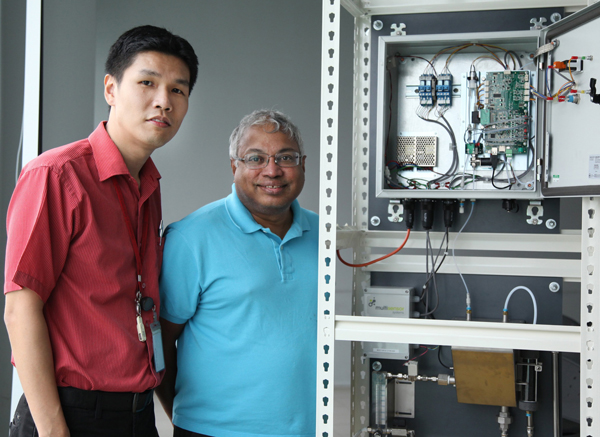KUCHING – A recent incident where the Sarawak Forest Department issued an SMS alert advising the public to avoid certain rivers and streams because they may have been infected by the Leptospira bacteria which causes Leptospirosis, or “penyakit kencing tikus”, shows that a better monitoring system needs to be put in place.
“A more advanced system sited at these locations which could pick up the presence of the bacteria within hours of it appearing, then transmits the data to the monitoring authority for the appropriate action to be taken is what we need,” said Dr Ng Sing Muk, Associate Director of the Research Centre for Sustainable Technologies at Swinburne University of Technology Sarawak Campus.
Ng had won a grant from the British Council to collaborate with The University of Manchester to develop a cutting-edge sensor for environmental monitoring.
“Currently, the sensor is able to pick up traces of volatile organic compounds such as chemical wastes from industry and household in the water instantly,” he said.
For the past year, he and his team of biotechnology postgraduate students have been working on developing the device to detect microbial content in water such as the Leptospira bacteria.
“We have had promising preliminary test results. It is able to detect the presence of bacterial community within a matter of hours. This is a breakthrough as standard methods for the detection of bacteria take days,” said Ng.
A unique feature is that the sensor allows 24/7 monitoring of any body of water cost-effectively, he added.
“It is left onsite, such as a river, and it operates independently anywhere with mobile phone coverage. The data collected is then transmitted to researchers.
“In more remote areas data may be sent via satellite. The process is simple, efficient and involves low maintenance cost.”
This, Ng explains, is in contrast to the current practice where samples are manually collected from the site and then transported to the laboratory for analysis, which takes about two days before the result is available.
With the nation engaging in transformation plans that involves large scale corridors and rapid development, ensuring that water sources are safe is crucial, he said.
The workings of the sensor was recently demonstrated at a workshop organised by Swinburne Sarawak on water quality monitoring which saw the involvement of speakers from the Natural Resources and Environmental Board Sarawak, UNIMAS and Swinburne Sarawak.
Themed “The knowing and know-how” it was aimed to expose participants to the current monitoring practice, discuss the need to safeguard water and shed light on the effort by the Sarawak government to keep tab on water quality.


